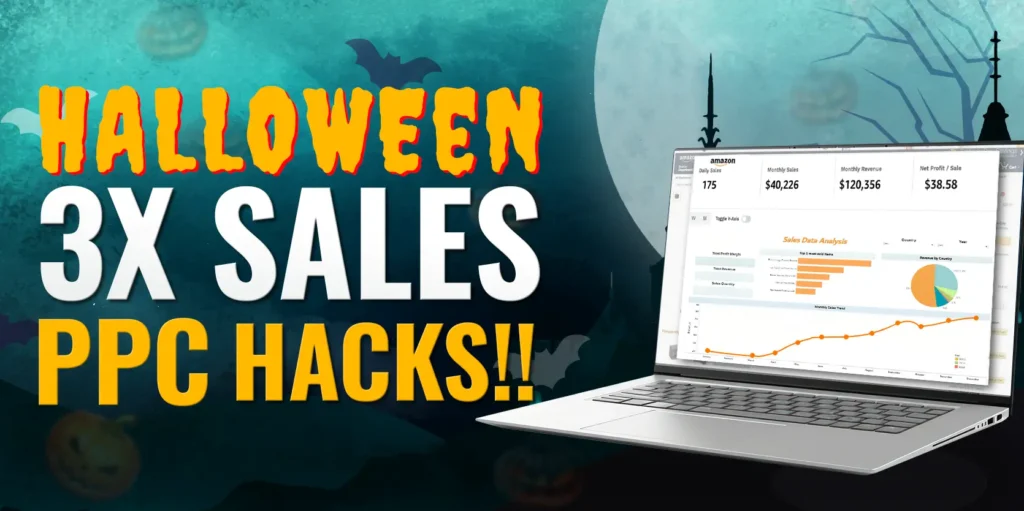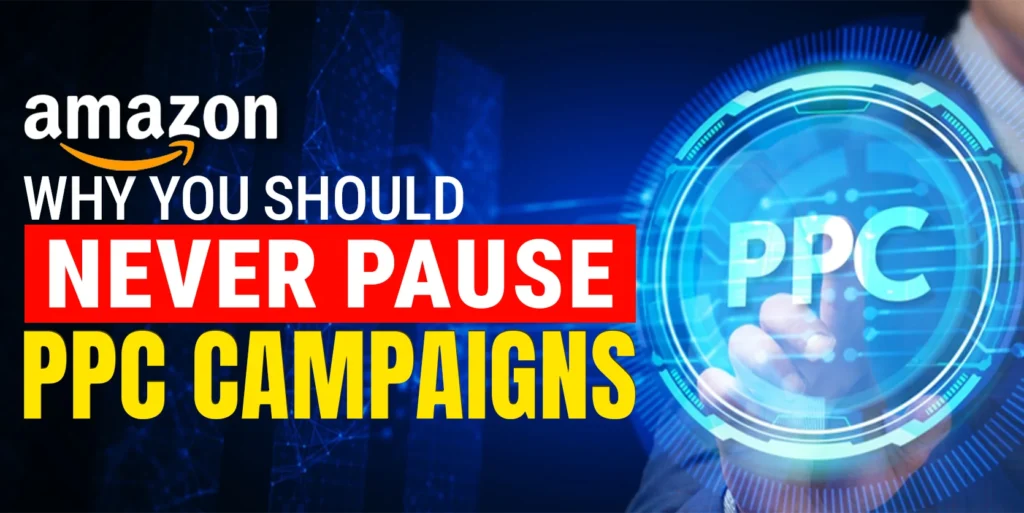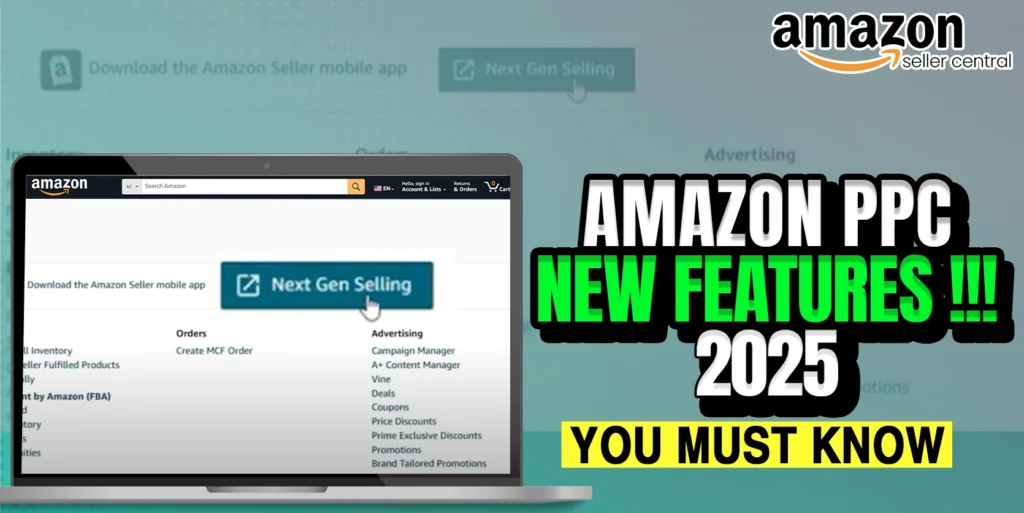Both Amazon sellers and shoppers wait for the big events at the Q4 of the like Halloween, Christmas, and other events. During this time of high selling seasons, Amazon offers a wide range of sales, deals, coupons and many discounts. This is the high time and most waited time to boost up the sales with Amazon PPC Hacks! Amazon shows new settings on PPC Ads to tweak the PPC bid adjustments, bid placements and other PPC Ads optimization tools during this time.
The Halloween season is a peak time for sellers looking to capitalize on increased shopping activity. Many Amazon sellers find it challenging to formulate the right advertising strategies to make the most of seasonal events like Halloween. In this blog, I’ll walk you through key Amazon PPC hacks to help you 3x your sales this Halloween.
1. Halloween Amazon PPC Keyword Search Volume
Understanding search volume for Halloween-related keywords is crucial. In my recent analysis, I used Helium10 and Amazon Brand Analytics to dive deep into trending Halloween keywords. Let’s walk through a quick analysis using Helium10’s Cerebro:
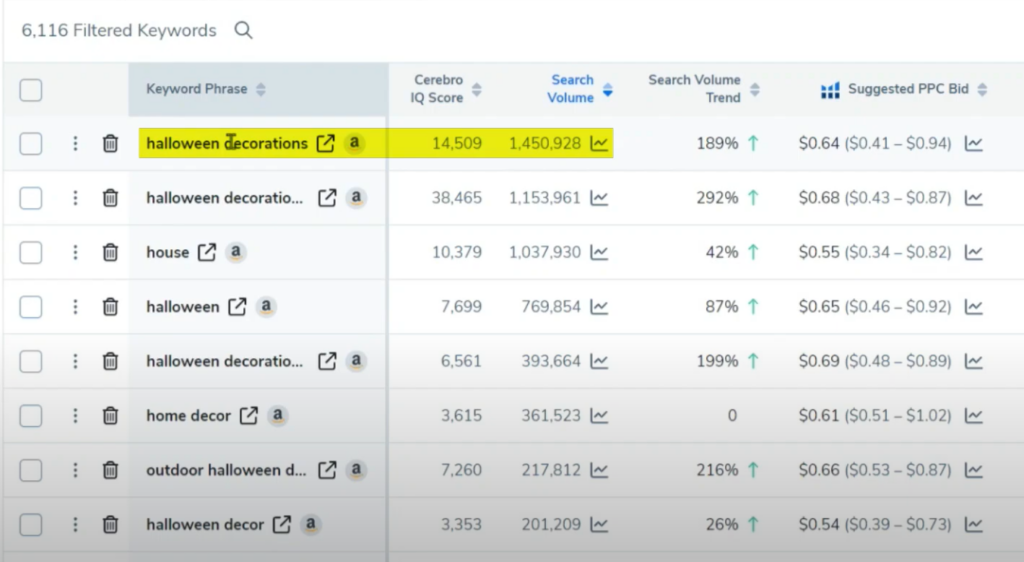
“Let’s pick a random ASIN from Amazon. If we put this into Helium 10 Cerebro and check the keywords. One of the top keywords, “Halloween decorations,” has a staggering 1.5 million searches in the past 30 days. Another high performer is “Halloween decorations outdoor,” which has over 1 million searches. The search volume trend for these keywords is rapidly increasing, some with trends spiking by over 180%. If we compare this with last year, the search volume could potentially reach over 4 million searches this Halloween season.”
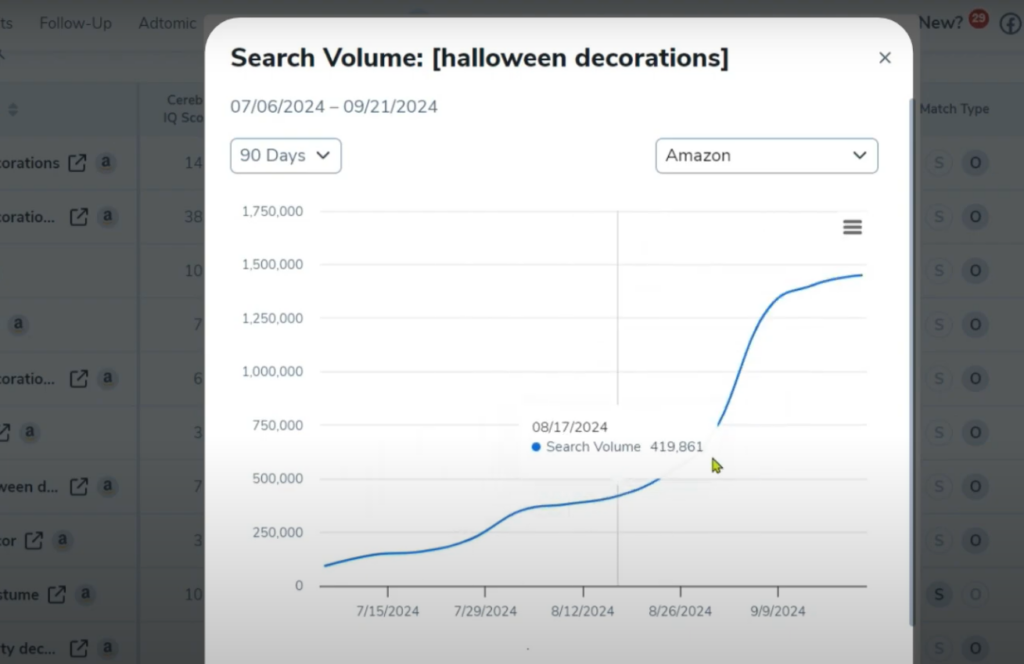
Analyzing this data helps you identify which high-volume keywords to target, maximizing your campaign’s visibility during the Halloween rush.
2. Amazon PPC Keyword Search Trends for Halloween
Search trends are critical for identifying when and how to adjust your PPC bids and keywords. Halloween search terms tend to spike dramatically in the weeks leading up to the holiday. Monitoring these trends ensures your campaigns remain competitive and in line with consumer demand.

“If you check the top keyword ‘Halloween costumes,’ you’ll notice its search volume trend has jumped by 189%, and other keywords like ‘Halloween party decorations’ have similarly impressive growth rates. By analyzing these trends over a 90-day period, you can anticipate when search volumes will peak.” Tracking search trends allows you to stay ahead of the curve and optimize your PPC ads effectively.
3. Amazon PPC Keyword Sales Volume for Halloween
Monitoring keyword sales volume gives insight into how well certain search terms are converting. While some keywords have high search volume, their conversion rates may differ. Prioritize keywords that generate substantial sales and align with your product offerings.
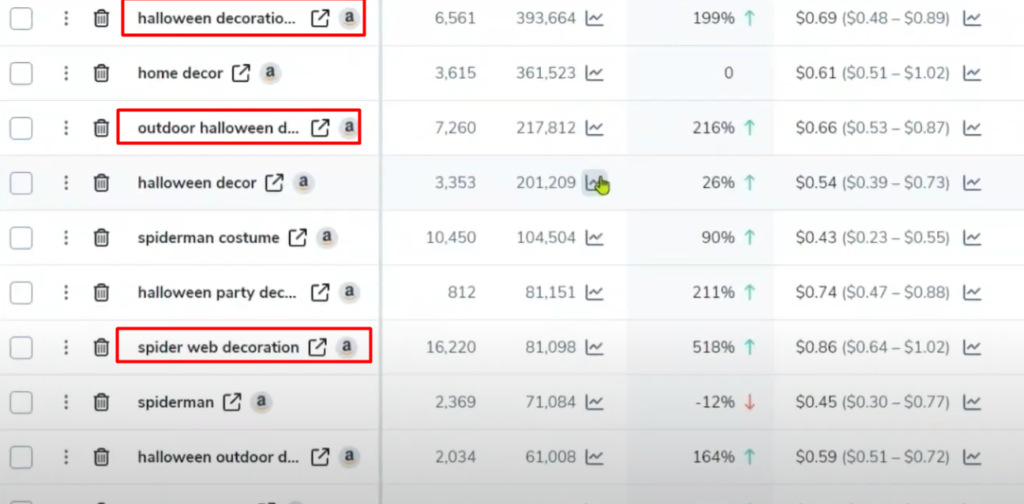
For instance, keywords like “Halloween décor” or “Spider-Man costume” might have high sales volume for October. Keep your focus on the high-converting keywords to ensure your campaigns deliver a strong return on ad spend.
4. Launch New Amazon PPC Campaigns for Halloween
Once you’ve identified your high-performing keywords, the next step is to create separate, seasonal campaigns specifically for Halloween. Why separate campaigns? While it may be tempting to place these seasonal keywords into existing campaigns, I strongly recommend creating separate campaigns for several reasons. Halloween is a unique, time-sensitive event, and separating these campaigns allows you to track performance independently. This way, after the event ends, you can easily turn off these seasonal campaigns without affecting your ongoing, year-round campaigns.
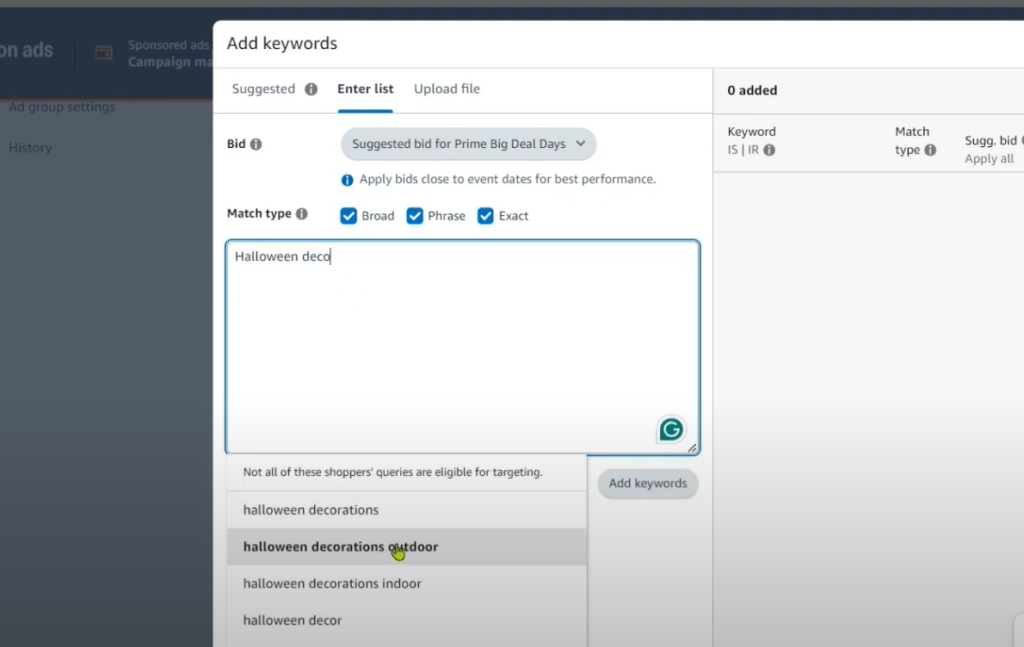
Types of New Campaigns to Create:
- Sponsored Products Campaigns: Target Halloween-specific keywords, such as “Halloween decorations,” “Halloween costumes for kids,” or “Halloween party supplies.”
- Goal: Drive sales of Halloween-related products.
- Sponsored Brands Campaigns: Showcase your brand by targeting seasonal keywords to drive traffic to your brand’s storefront or product listings.
- Goal: Build brand visibility for Halloween while driving targeted traffic.
- Sponsored Display Campaigns: Leverage audience targeting to remarket to shoppers who have previously shown interest in Halloween-related products.
- Goal: Re-engage potential customers and increase conversions with targeted display ads.
ACoS Rule:
- Set a more flexible ACoS goal for these seasonal campaigns. I recommend aiming for an ACoS of 20-30% initially, as Halloween keywords may have a higher CPC due to increased competition. Monitor the campaign closely and adjust if needed.
Budget Rule:
- Start with a higher daily budget than usual to capture the surge in traffic. For example, if your regular daily budget is $50, consider starting with $100 or more for these seasonal campaigns.
- Gradually scale down the budget after Halloween when the traffic wanes.
Strategy:
- Bid Aggressively: Increase bids by 10-15% over Amazon’s suggested bid to ensure maximum visibility during peak Halloween shopping periods.
- Test and Optimize: Continuously monitor keyword performance, and test different ad copies and creatives to see which resonate best with the Halloween audience.
- Use Negative Keywords: Add negative keywords to avoid irrelevant traffic and reduce wasted spend on non-converting search terms.
Duration:
- Start your Halloween campaigns about 3-4 weeks before Halloween to build momentum, and run them until 2-3 days after Halloween to capture last-minute shoppers and post-event traffic.
- This gives you a window of time to optimize performance, gather data, and make adjustments as needed for the best ROI.
By creating dedicated, seasonal campaigns and following these best practices, you can maximize your Halloween PPC efforts and capture more conversions during this limited-time event.
5. Adjust and Optimize PPC Keyword Bids for Amazon Halloween Sales
Setting competitive bids is crucial for seasonal success. During Halloween, bidding aggressively can be the difference between your ads being seen or getting lost in the competition. As Halloween approaches, Amazon typically suggests bids for seasonal keywords based on historical data. I recommend adjusting your bids to be 10-15% higher than Amazon’s suggested bids for Halloween-related keywords. This small increase can significantly boost your visibility during this high-traffic event.

For example, if Amazon suggests a bid of $1.50 for the keyword “Halloween decorations”, consider increasing it to $1.65. This adjustment helps ensure your ads capture more impressions, clicks, and ultimately, conversions. By proactively optimizing your bids, you can gain a competitive edge and maximize your visibility during this limited-time shopping surge.
6. Budget Amplification Strategy for Halloween Amazon PPC Campaigns
Halloween is a short-lived season, so keeping your campaigns live at all times is essential. Running out of budget during peak times could lead to missed sales opportunities.
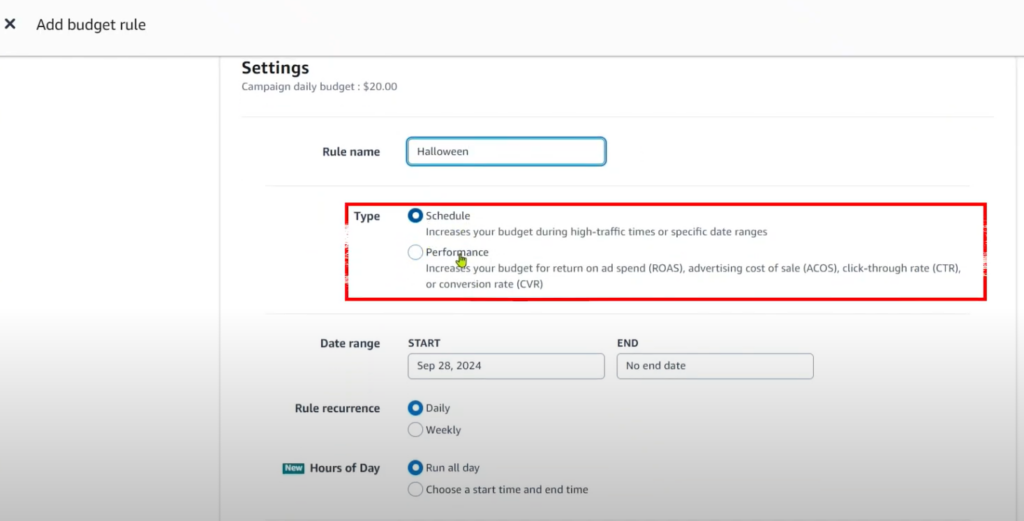
To prevent this, We recommend setting budget rules for your campaigns. For instance, you can create a rule that increases your budget by 200% if your ACoS remains below 30%. This ensures that your ads continue running without interruption during high-traffic periods. With smart budget rules, you’ll keep your campaigns active while controlling costs.
7. Track Performance of Seasonal Halloween Amazon PPC Campaigns
Tracking seasonal campaigns separately helps you gather valuable performance insights and enables more targeted optimizations. By isolating your Halloween-specific campaigns, you can better assess how well your ads are performing in real-time, adjusting strategies accordingly.
Key Metrics to Track:
- Impressions: Measure how often your ads are shown to potential customers. High impressions indicate that your ads are visible, but you’ll want to monitor if they are leading to conversions.
- Clicks: Track how many users are clicking on your ads. A high click-through rate (CTR) means that your ads are relevant to your target audience, but further tracking is needed to ensure those clicks are converting.
- Conversions: Monitor how many clicks are turning into actual sales. High conversions suggest that your ads are resonating with customers, while low conversions could signal that the ad copy or product offering needs adjustment.
- ACoS (Advertising Cost of Sales): Keep an eye on your ACoS to ensure that your advertising spend is justified by the revenue generated. For Halloween, you might expect a slightly higher ACoS due to competition, but aim for a balance between driving sales and maintaining profitability.
- CTR (Click-Through Rate): This measures how effectively your ad copy and keywords are prompting clicks. If your CTR is low, consider optimizing your ad text or testing different long-tail keywords.
- Conversion Rate: The ratio of sales to clicks, which shows how efficiently your listings are converting visitors. Low conversion rates may indicate the need to adjust your product listing, pricing, or ad creative.
- ROAS (Return on Ad Spend): The amount of revenue generated per dollar spent on ads. Tracking ROAS allows you to see if your Halloween PPC strategy is profitable or if adjustments are needed to improve overall efficiency.
Recession Strategies for Sellers:
- Adjust Bids: If you notice that your ACoS is climbing too high, consider lowering your bids on more competitive or high-cost keywords to maintain profitability while still driving targeted traffic.
- Refine Keyword Targeting: Shift your focus to longer-tail keywords or niche phrases that may have lower competition, reducing CPC (cost per click) while maintaining relevance.
- Increase Budget on High-Performing Campaigns: For campaigns with strong conversion rates and low ACoS, increase your budget to maximize exposure during the Halloween season.
- Pause Low-Performing Campaigns: If certain keywords or campaigns are not delivering, consider pausing them temporarily to reallocate your budget to higher-performing ads.
- Optimize Product Listings: Ensure your product listings are optimized with seasonal keywords, compelling images, and competitive pricing to increase conversions. High-quality listings can help lower your ACoS.
- Use Negative Keywords: If you’re noticing irrelevant traffic that doesn’t convert, add negative keywords to prevent wasted clicks on non-converting search terms.
- Test Ad Copy and Creative: Continuously run A/B tests on ad copy, images, and call-to-actions. Try different approaches to see which resonates better with your Halloween shoppers.
By tracking these KPIs and adjusting your strategy based on the insights gained, you can optimize your Amazon PPC campaigns for the Halloween season, ensuring maximum profitability and a stronger return on investment.
8. Apply These Strategies to Christmas PPC Campaigns
Once Halloween is over, you can repurpose many of these strategies for Christmas. Start planning early, monitor keyword trends, adjust bids, and create new campaigns dedicated to holiday shopping. High-performing seasonal keywords, coupled with higher bids and strategic budgeting, will help you maximize your holiday sales.
9. Halloween Tip: Harvest Traffic Like a Ghost
As a final tip, focus on long-tail keywords and less competitive search terms to capture ‘ghost’ traffic—those high-conversion keywords with low competition. For example, targeting ‘Halloween home decorations under $25’ can help you capture niche customers that larger competitors might overlook.
How Amazon PPC Can Help:
- Refined Targeting: Amazon PPC allows you to fine-tune your targeting to reach these niche audiences with precision. By selecting specific keywords such as ‘Halloween home decorations under $25,’ you can ensure your ads are shown to customers who are already looking for products within that price range, increasing the likelihood of conversions.
- Lower Cost-per-Click (CPC): Long-tail keywords generally have lower competition, which can lead to a more cost-effective PPC strategy. You can capture traffic at a lower CPC while ensuring you’re targeting highly relevant search queries, improving your return on ad spend (ROAS).
- Bid Optimization: With long-tail keywords, you can adjust your bids to ensure you’re not overspending on broad, competitive terms. This approach allows you to allocate your budget more efficiently and maximize visibility within niche categories.
- A/B Testing: Utilize Amazon PPC’s A/B testing features to experiment with different long-tail keywords and ad copy. You can test variations like ‘affordable Halloween home decor’ versus ‘budget Halloween decorations’ to see which captures more conversions at a lower cost.
Planning for Success:
- Keyword Research: Dive deep into keyword tools and explore niche long-tail terms. Use Amazon’s own keyword research tools, as well as third-party tools, to find terms that fit your target customer but might be underutilized by competitors.
- Seasonal Relevance: Plan your PPC campaigns around specific, seasonal keywords, including those that have a high conversion rate but less competition. For Halloween, think beyond broad terms like ‘Halloween decorations’ and zero in on detailed phrases like ‘Halloween home decorations for small spaces’ or ‘Halloween table centerpieces.’
- Negative Keywords: Ensure you’re excluding irrelevant or overly broad keywords with low conversion rates. This ensures your ad budget is spent on terms that are truly relevant to your niche, further reducing wasted spend.
- Optimize Listings: Align your Amazon listing with your PPC ads by including relevant keywords in your titles, bullet points, and descriptions. This will improve your Quality Score, helping your ads show higher with a more favorable CPC.
- Monitor and Adjust: Halloween traffic spikes can be unpredictable. Continuously monitor your PPC campaigns and make adjustments as needed. Focus on tweaking bids, optimizing keywords, and adjusting ad placements to stay ahead of the competition.
By focusing on niche keywords and carefully planning your Amazon PPC strategy, you can effectively capture ‘ghost’ traffic and boost your sales during the Halloween season.
Insights!
We’ve covered a range of powerful Amazon PPC strategies to help you maximize your sales this Halloween season. From understanding keyword search volume and tracking trends to optimizing bids and running targeted seasonal campaigns, these hacks will give you the competitive edge you need. By monitoring your performance and making timely adjustments, you’ll not only capture more clicks but also ensure a higher return on investment.
Remember, these tips aren’t limited to Halloween—once the spooky season ends, you can apply the same strategies for Christmas and other holiday events. With every season, you’ll get better at refining your PPC game, increasing your sales, and building your brand on Amazon.
Now it’s your turn to take action! Start optimizing your campaigns today, and don’t forget to share these valuable strategies with the seller community to help others succeed. Let’s all work together to make this Q4 the most profitable one yet.
Here, at Ecomclips, we have been helping many Amazon sellers boost their sales and capture market share with both PPC and organic SEO. If you need any help boosting your Amazon sales or growing your brand, please don’t hesitate to mail us at our email address, info@ecomclips.com
Also, if you require an Amazon store or account audit for both PPC ads and SEO, you can let us know via our email address, and we will provide you with a free account audit. Additionally, if you require any assistance, please reach out to us in the comment box. We are here to assist you in managing PPC advertisements to improve your profit, so we offer a personalized approach to our service.
